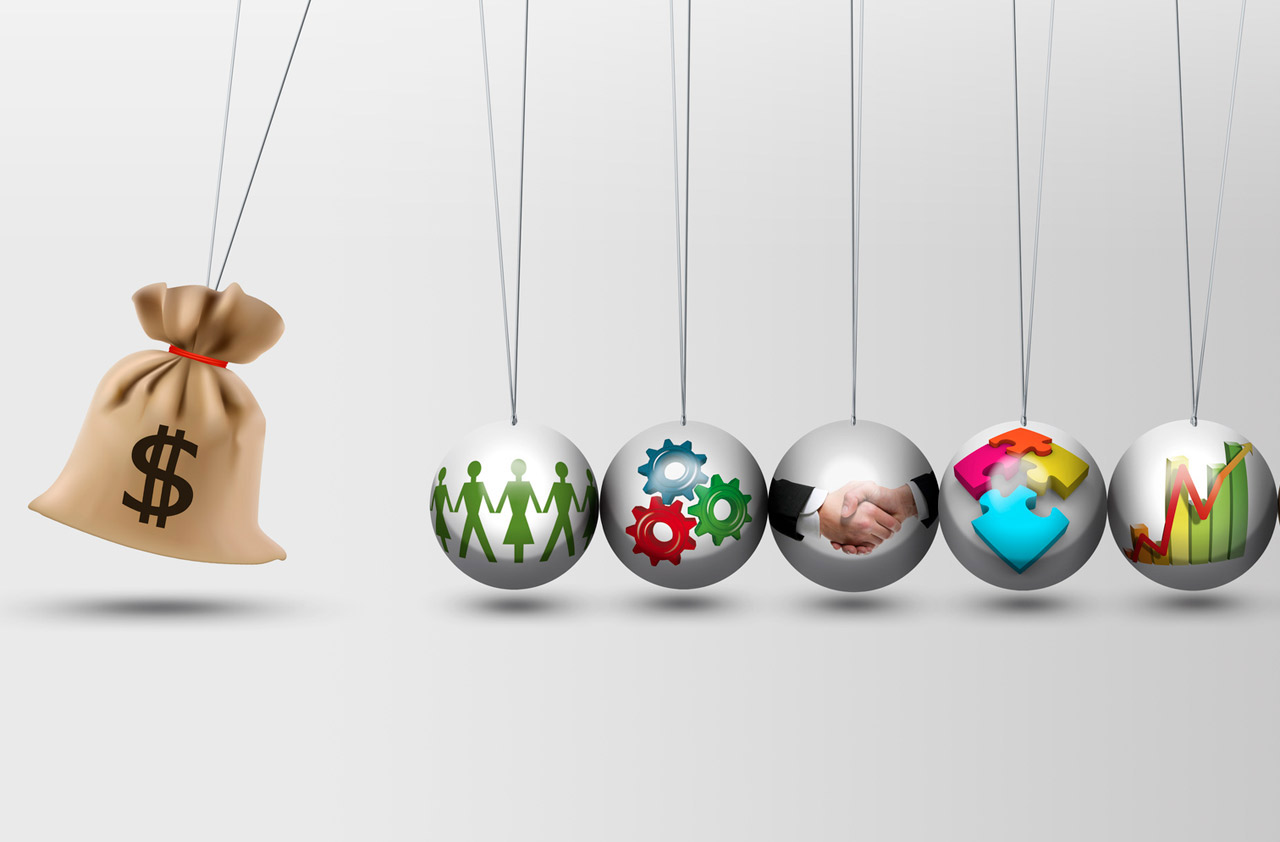The Fed/Trump Face-off: When Fiscal and Monetary Policy Collide
The Fed under Janet Yellen and the Trump administration appear to be on a collision course. Here’s what worried investors should know.


On March 15 the Federal Open Market Committee, the branch of the Federal Reserve System that makes interest rate and other monetary policy decisions, raised short-term interest rates by 0.25%. While Fed Chair Janet Yellen didn’t explicitly indicate that the Fed would become more aggressive with its timeline of raising rates, the general consensus is that further hikes are coming this year. The Fed’s dual mandate of price stability (2% inflation) and full employment are close to being achieved, and the risks lean toward rising inflation.
Meanwhile, the Trump administration set forth a path for accelerated economic growth, with a targeted 4%+ GDP growth objective — something that will be increasingly difficult to achieve as the Fed tightens monetary policy.
On the surface, these contradicting trajectories and policies might be troubling to investors — however they don’t need to be, at least not yet.
From just $107.88 $24.99 for Kiplinger Personal Finance
Become a smarter, better informed investor. Subscribe from just $107.88 $24.99, plus get up to 4 Special Issues

Sign up for Kiplinger’s Free Newsletters
Profit and prosper with the best of expert advice on investing, taxes, retirement, personal finance and more - straight to your e-mail.
Profit and prosper with the best of expert advice - straight to your e-mail.
Looking at history, one would have to go back to 1954 to identify a period when interest rates were at the current ultra-low levels. Since then, the Federal Reserve embarked on 14 different rate-hike cycles, during which the U.S. economy experienced above-average GDP growth each time. It seems counterintuitive for the U.S. economy and the stock market to out-perform their long-term averages during interest rate hike cycles, but there is a valid rationale.
It generally takes six to 12 months for monetary policy actions to take root. Any impact from an interest rate hike in March will likely not be felt by the economy until later this year or early next year. The effect may be more pronounced during the current cycle because the Fed has been very measured and cautious in its approach so far. This rate-hike cycle is probably starting on the late side of things, so economic growth momentum is pretty strong and is unlikely to be derailed quickly. Historically this is not uncommon, as the Fed tends to start its rate-hike cycle a bit too late and tends to end it a bit too late as well (which explains why the economy and stock market tends to underperform in the year following the end of a rate-hike cycle).
Conversely, deregulation and expectation of tax reform have a very rapid impact on investors’ psychology and business sentiment. The Trump administration has already changed the regulatory environment through several executive orders, and given that Congress is controlled by Republicans, more legislative action is likely. This should have an almost immediate impact on business sentiment and, therefore, business investment. Furthermore, the prospect of tax reform — both on a corporate and individual level — is likely to further entice spending.
In other words, the Fed’s action will take some time before it affects the economy, while the Trump administration’s actions will be felt much more rapidly.
This is not the end of the story. Investors should be aware that there are many other fiscal and monetary policy tools available to the administration and the Federal Reserve respectively. For now, the Fed is remaining patient while the administration is deploying its “rapid-fire” policies. This means the U.S. economy can be expected to continue to grow at a solid pace with strong corporate earnings growth — currently expected to rise by 10% for the calendar year. Consequently, the markets are reaching new highs. However, if the economy begins to heat up too quickly or inflation rises more than desired, the Fed has many tools available to quickly cool the economy.
For those who are worried about a derailing of the economy, pay close attention to the tools the Fed deploys. Raising interest rates alone should continue the bullish trend, but changing the bank reserve requirements or significant intervention in foreign currency operations could signal a more volatile economic environment and spell trouble for investors.
Likely Winners:
- Financial firms (deregulation) and savers (higher rates)
- Energy companies (deregulation)
- Domestic exporters (weaker dollar)
- Insurance companies (deregulation)
Likely Losers:
- Borrowers (higher rates)
- Retailers (higher rates / over $3 trillion in outstanding debt)
- Foreign producers (new trade agreements)
- Insured Americans (higher premiums / loss of coverage)
Profit and prosper with the best of Kiplinger's advice on investing, taxes, retirement, personal finance and much more. Delivered daily. Enter your email in the box and click Sign Me Up.

Oliver Pursche is the Chief Market Strategist for Bruderman Asset Management, an SEC-registered investment advisory firm with over $1 billion in assets under management and an additional $400 million under advisement through its affiliated broker dealer, Bruderman Brothers, LLC. Pursche is a recognized authority on global affairs and investment policy, as well as a regular contributor on CNBC, Bloomberg and Fox Business. Additionally, he is a monthly contributing columnist for Forbes and Kiplinger.com, a member of the Harvard Business Review Advisory Council and a monthly participant of the NY Federal Reserve Bank Business Leaders Survey, and the author of "Immigrants: The Economic Force at our Door."
-
 7 Retirement Planning Trends: What They Mean for You in 2026
7 Retirement Planning Trends: What They Mean for You in 2026From government shutdowns to market swings, the past 12 months have been nothing if not eventful. The key trends can help you improve your own financial plan.
-
 What Defines Wealth? A Christmas Tale of Legacy vs Possession
What Defines Wealth? A Christmas Tale of Legacy vs PossessionThe tale of Good King Wenceslas shows that true wealth is built through generosity, relationships and the courage to act kindly no matter what.
-
 5 Moves to Ensure the Markets Work Hard for You in 2026
5 Moves to Ensure the Markets Work Hard for You in 2026After a strong 2025 in the stock market, be strategic by rebalancing, re-investing with a clear purpose and keeping a disciplined focus on your long-term goals.
-
 7 Retirement Planning Trends in 2025: What They Mean for Your Wealth in 2026
7 Retirement Planning Trends in 2025: What They Mean for Your Wealth in 2026From government shutdowns to market swings, the past 12 months have been nothing if not eventful. The key trends can help you improve your own financial plan.
-
 What Defines Wealth: Soul or Silver? Good King Wenceslas' Enduring Legacy in the Snow
What Defines Wealth: Soul or Silver? Good King Wenceslas' Enduring Legacy in the SnowThe tale of Good King Wenceslas shows that true wealth is built through generosity, relationships and the courage to act kindly no matter what.
-
 An Investing Pro's 5 Moves to Help Ensure 2025's Banner Year in the Markets Continues to Work Hard for You in 2026
An Investing Pro's 5 Moves to Help Ensure 2025's Banner Year in the Markets Continues to Work Hard for You in 2026After a strong 2025 in the stock market, be strategic by rebalancing, re-investing with a clear purpose and keeping a disciplined focus on your long-term goals.
-
 Introducing Your CD's Edgier Cousin: The Market-Linked CD
Introducing Your CD's Edgier Cousin: The Market-Linked CDTraditional CDs are a safe option for savers, but they don't always beat inflation. Should you try their counterparts, market-linked CDs, for better returns?
-
 How to Protect Yourself and Others From a Troubled Adult Child: A Lesson from Real Life
How to Protect Yourself and Others From a Troubled Adult Child: A Lesson from Real LifeThis case of a violent adult son whose parents are in denial is an example of the extreme risks some parents face if they neglect essential safety precautions.
-
 To Build Client Relationships That Last, Embrace Simplicity
To Build Client Relationships That Last, Embrace SimplicityAs more automation becomes the norm, you can distinguish yourself as a financial professional by using technology wisely and prioritizing personal touches.
-
 Client Demand Is Forcing Financial Advisers to Specialize: How to Deliver
Client Demand Is Forcing Financial Advisers to Specialize: How to DeliverThe complexity of wealthy clients' needs — combined with AI and consumer demand — suggests the future of financial planning belongs to specialized experts.
-
 A Financial Planner Takes a Deep Dive Into How Charitable Trusts Benefit You and Your Favorite Charities
A Financial Planner Takes a Deep Dive Into How Charitable Trusts Benefit You and Your Favorite CharitiesThese dual-purpose tools let affluent families combine philanthropic goals with advanced tax planning to generate income, reduce estate taxes and preserve wealth.